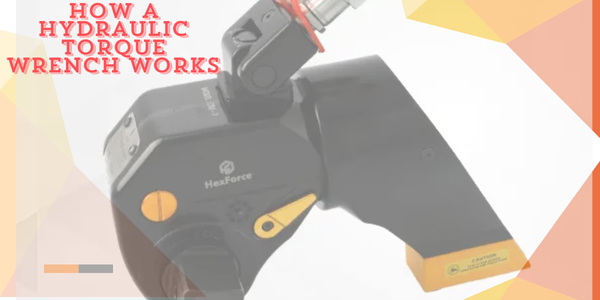
Hydraulic torque wrenches are industrial powerhouses designed to apply precise and controlled torque to fasteners, particularly large ones that demand significant tightening or loosening force. Unlike traditional manual wrenches, these tools utilize hydraulic power to deliver exceptional torque, making them indispensable in various industries.
Understanding the Basics
At its core, a hydraulic torque wrench consists of a hydraulic pump, a hose, and the wrench head. The pump generates hydraulic pressure, which is transmitted through the hose to the wrench head. The wrench head contains a mechanism that converts this hydraulic pressure into rotational force, allowing the user to apply torque with precision.
Key Components and Their Function
- Square Drive Torque Wrench: The heart of the system, this component houses the hydraulic mechanism and provides the square drive interface for attaching different sockets.
- Hydraulic Pump: This unit generates the hydraulic pressure required to operate the wrench.
- Hydraulic Hose: This flexible tube connects the pump to the wrench head, transmitting the hydraulic fluid.
- Low Profile Torque Wrench: In some cases, where space is limited, a low profile design is used to access hard-to-reach fasteners.
- Hydraulic Torque Wrench Cassette Drive: This interchangeable component allows for quick changes between different socket sizes.
How it Works
To operate a hydraulic torque wrench, follow these steps:
- Attach the desired socket: Select the appropriate socket size and secure it to the square drive of the wrench.
- Connect the hydraulic hose: Connect one end of the hose to the pump and the other to the wrench head.
- Generate hydraulic pressure: Operate the pump to generate the required hydraulic pressure.
- Apply torque: As the hydraulic pressure increases, it exerts a rotational force on the socket, tightening or loosening the fastener.
- Release pressure: Once the desired torque is reached, release the pressure from the pump to stop the wrench.
Advantages of Hydraulic Torque Wrenches
- High torque capacity: Handles large and heavy-duty fasteners with ease.
- Precision: Delivers accurate torque values, reducing the risk of over-tightening or under-tightening.
- Efficiency: Saves time and effort compared to manual methods.
- Versatility: Available in various configurations to suit different applications.
Applications
Hydraulic torque wrenches find applications in numerous industries, including:
- Construction
- Oil and gas
- Manufacturing
- Automotive
- Heavy equipment
Cost Considerations
The hydraulic wrench price varies depending on the torque capacity, features, and brand. While these tools represent a significant investment, their durability and performance often justify the cost in terms of increased efficiency and reduced downtime.
In conclusion, hydraulic torque wrenches are powerful and precise tools that have become essential in many industries. By understanding their working principles and components, you can effectively utilize these tools to enhance your operations.
Comments on “How a Hydraulic Torque Wrench Works: Power and Precision”